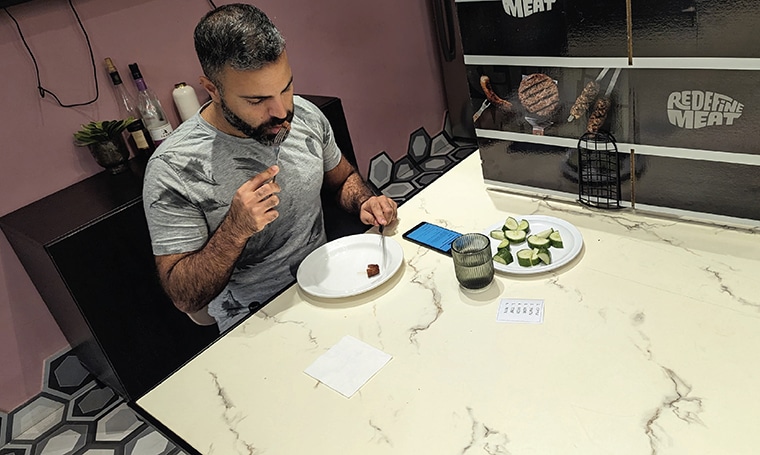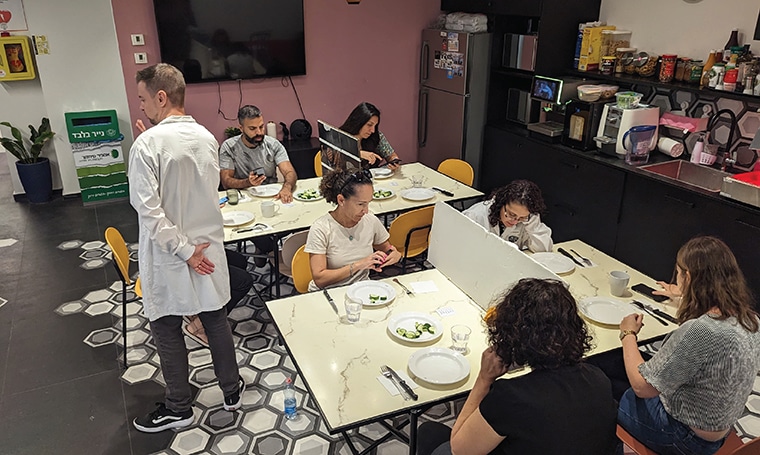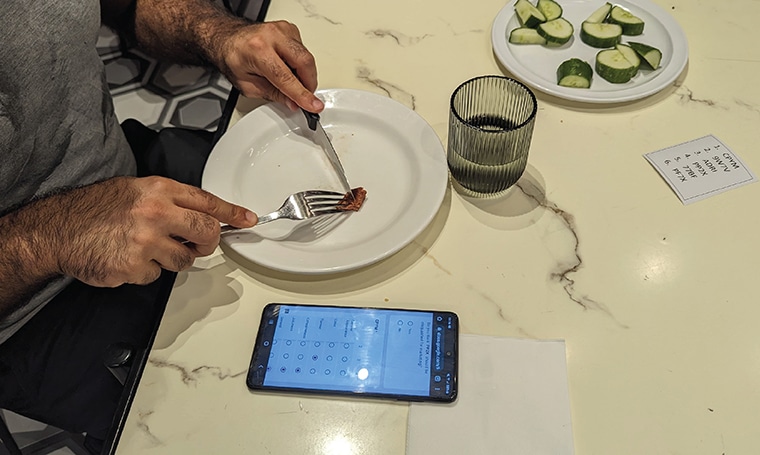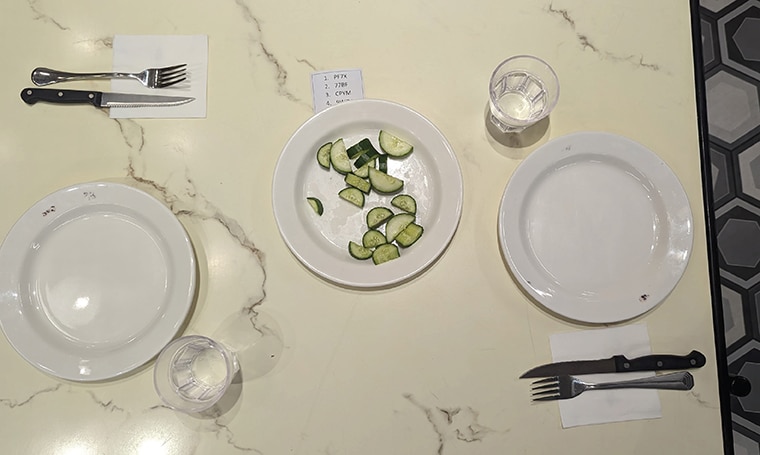
Sensory Panels: The Secret Ingredient to Creating New-Meat That Turns on All Your Senses
At Redefine Meat, we are passionate about meat and are also on a mission to revolutionize how you think about meat. Our aim? To create new-meat that is delicious, kind to animals, and better for people’s health and the health of our planet. In this post, we’ll give you a behind-the-scenes look at one of the key components of the development process that makes this possible: sensory panels.

Our Product Development Process: It’s About the Taste, and Much More
It takes a special multi-dimensional process to recreate the meat-eating experience, one that caters to each of the five senses. To do this, we integrate the expertise of world-leading butchers, meat scientists, chefs, nutritionists, and, of course, food engineers. This begins by studying animal meat and breaking it down to its tiniest components—from muscle to fat marbling. (You can learn more about the composition of meat in this recent article and continues until after it’s served on a plate.
The mix of innovative, tailored technology and an encyclopedic knowledge of all-things-meat has allowed us to create a new-meat portfolio that ranges from whole-muscle cuts like Redefine Beef Flank to versatile Pulled Beef and popular minced meat favorites such as Premium Burgers, Kabab, and Bratwurst. We’ve even expanded our horizons beyond beef to include lamb and pork-flavored products.
But what mostly sets us apart in the plant-based meat industry is our commitment to replicating the sensory experience of eating meat. To achieve this, we combine science, technology, and sensory perception.

The Power of Sensory Panels
From the early days Redefine Meat, we knew that a great-tasting product was key. This was no easy feat when the benchmark was traditional meat. Early on, we conducted the world’s largest blind-tasting test for new-meat and were delighted to achieve an acceptance rate of over 90%! This bore good news for the planned launch in the market and also showed us the importance of continually testing our portfolio with a variety of consumers.
Sensory panels are one of the ways we use to gain insights into how different people – with diverse tastes and preferences – experience our products. These panels consist of volunteers sitting in a controlled space and evaluating our products using all their senses. The volunteers give important feedback on our products’ flavor, aroma, texture, mouthfeel, and appearance.
We run sensory panels on a regular basis as part of the development of our products and as part of our ongoing production process. It’s a never-ending, iterative process that ensures our final product meets consumer preferences and lives up to our own high standards.
Sensory panels help us gauge, among other things, how closely new-meat tastes like traditional meat. (We use other processes to evaluate how it fares in terms of nutrition. You can learn. You can learn more here)

Sensory Panels at Redefine Meat
There are different types of sensory panels. Some panels include volunteers who undergo rigorous training to develop their sensory acuity, which assists us in standardizing evaluations. Other panels are held with “supertasters,” people who have been identified to have exceptional sensory abilities (and yes, this seems to be influenced by genes.) And yet other panels are held with “regular” volunteers.
Some panels are used to gauge consumer acceptability and preferences (we call this Hedonic testing), while others focus on a range of products and specific “measures” of parameters that we are interested in assessing at a particular stage of development.
One rule of thumb, however, is that in each and every panel, we offer identical testing conditions to each of the volunteers of the panel: they are held at the same time, served the same sample or samples, and are given the same evaluation form.
Imagine you are invited to take part in one of our sensory panel sessions. What do you see?
For a start, you’ll find yourself in a neutral environment, free from distractions and external biases. That means, among other things, maintaining silence during a tasting.
A test begins with the leader (usually me or one of my colleagues in Food Engineering) setting the stage: how many samples will be tried, reviewing the questions to see if everything is clear, and answering any concerns from the volunteers.
After everyone has logged in to the form, participants are served one or two samples on a plate – all freshly cooked from the adjacent kitchen. In some tests, participants compare one sample to the other. In other tests, called Hedonic Tastings, we ask volunteers to taste each sample and give feedback solely based on their preferences. For example, a typical question for the latter would be to share their feedback: “Rate sample XYZ for overall preference, on a scale from 1 to 7, when 1 is ‘very bad’ and 7 is ‘excellent.’”

Because we often give panellists more than one sample, each table has “palate cleansers,” such as water or slices of cucumber, to “refresh” their palate with something neutral between samples. This helps ensure accurate results.
And because human sensory perception can vary across individuals, we use statistical methods to iron out any inconsistencies and achieve reliable results. We use this qualitative and quantitative data to evaluate how our products stack up against the ideal sensory experience of the reference sample.
Sensory Panels… as Part of Your Job?
One fun fact about working at Redefine Meat is that employees often find themselves participating in Sensory Panels as part of their regular workday.
For example, take Yair. He runs our digital activities but is also a supertaster. As someone who can give particularly useful feedback on our products, part of his job is the sensory evaluation of our products. This is why Yair is invited to sensory panels more often than a “regular” employee or other volunteer – sometimes to three or more panels per week.
“For me, being a supertaster is a fascinating part of my job. It requires a lot of concentration, but it’s enjoyable. I get to track in a unique way how the taste, texture, and flavor of new-meat is evolving over time. It’s very exciting to see just how close to the taste, feel and aroma of animal meat we are able to get over time.”
And he adds, “It also means that I snack a lot less… which can be helpful when you want to stay in shape.”





